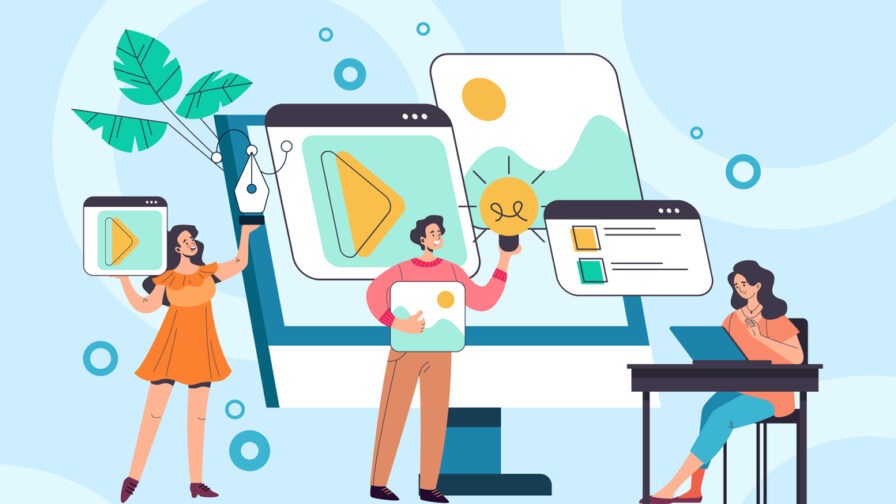
After celebrating Cat Day, Towel Day (since it’s an English celebration, there’s only one towel), and other quirky days, it’s time for International Programmer’s Day—a day that celebrates devs and their fundamental role in technological innovation. It’s a moment to recognize and appreciate the contributions these professionals make to modern society.
Programmers face unique and complex challenges. As essential professionals in the development of software, applications, and advanced systems, they operate in a constantly evolving landscape that presents challenges beyond their imagination. In this article, we explore three key challenges programmers face today: artificial intelligence (AI), layoffs in the tech industry, and the gender gap in programming, concluding with some interesting trivia.
The Impact of Artificial Intelligence on Programmers’ Work
Artificial intelligence is one of the driving forces behind 21st-century digital transformation. As technology continues to advance rapidly, programmers find themselves working on increasingly innovative AI projects and applications. However, these advancements come with significant difficulties and equally important opportunities.
One of the main challenges is the growing complexity of AI. Programmers must continuously update their skills to keep up with the latest trends and progress in AI.
Additionally, ethical and moral concerns arise. Programmers face difficult decisions on how to train algorithms to avoid discrimination or harmful behavior. Ethical responsibility in the use of AI has become a crucial issue.
Another aspect related to AI is cybersecurity. As AI becomes more integrated into our daily lives, programmers must protect systems from threats such as hacking and data theft, which can have devastating consequences for privacy and security.
On the positive side, AI has significantly impacted programmers’ work. Some of the main benefits include:
- Automation of repetitive tasks: AI can automate basic coding, testing, and error correction, allowing programmers to focus on more creative and complex tasks.
- Increased productivity: AI-powered tools and environments can provide suggestions, detect errors, and offer contextual information, accelerating developers’ workflows.
- Advanced data analysis: AI can analyze large datasets and extract insights, helping programmers working on data-driven projects.
- Bug detection and error fixing: AI can identify bugs and suggest solutions, reducing debugging time.
- Performance optimization: AI can optimize system performance in real-time, leading to more efficient applications.
- Automated testing: AI can automate unit and regression tests, ensuring continuous verification of software functionalities.
Layoffs in Tech Companies: How the Workforce Is Changing
Despite significant growth in the tech industry, it is not immune to economic challenges. One particularly delicate issue that programmers face today is layoffs. Even as tech companies thrive, economic uncertainty can lead to difficult decisions regarding workforce reductions.
Layoffs can be devastating for devs who lose their jobs in a highly specialized sector. While technical talent is generally in high demand, finding new opportunities can be tough in a competitive market. Additionally, layoffs can have a psychological impact, fostering a sense of job insecurity.
Major tech companies have laid off tens of thousands of workers recently, often not due to economic difficulties but rather corporate restructuring. Changes in technology and automation have also made certain roles obsolete or reduced the need for human resources.
However, startups are seizing this opportunity to recruit skilled workers laid off by big tech companies, balancing the effects of this phenomenon to some extent.
The Gender Gap in Programming: Where Do We Stand?
The gender gap remains a persistent challenge in programming and the tech industry overall. Despite significant progress in promoting gender diversity, women are still underrepresented in many areas of technology.
One of the main reasons for this disparity is the lack of access to education and opportunities in technology from an early age. Girls are often excluded from STEM (Science, Technology, Engineering, and Math) programs or discouraged by gender stereotypes.
The gender gap negatively impacts the tech industry, as gender diversity is linked to increased creativity, innovation, and productivity in software development teams. Consequently, the sector misses out on the full potential of women programmers.
According to a 2023 study by the Massachusetts Institute of Technology (MIT), women represent only 28% of the STEM workforce. On the bright side, the gender pay gap in computer science is one of the smallest, with women earning 94% of what men earn.
Encouragingly, the latest statistics show a growing trend of women aged 18-24 taking up programming, with 13.9% having started coding as teenagers, compared to 44.9% of men, and this figure continues to rise.
Fun Facts About International Programmer’s Day
Why is International Programmer’s Day celebrated on the 256th day of the year? The number 256 was chosen because it’s the largest number that can be represented with a byte (8 bits) of data.
The day was first proposed by Russian and Ukrainian programmers Valentin Balt and Michael Cherviakov, with the first official celebration taking place on September 12, 2002.
Over the years, International Programmer’s Day has gained popularity within the tech community, with many organizations and companies using it to appreciate and motivate their developer teams.
Conclusion
Programmers are at the heart of today’s technological revolution, but they face numerous challenges. The evolution of artificial intelligence requires constant training and increased ethical responsibility. Tech industry layoffs threaten job security, and the gender gap represents both a challenge and a missed opportunity for diversity and innovation.
Addressing these challenges requires a continued commitment from organizations, educational institutions, and society as a whole. Providing accessible training opportunities, promoting gender diversity, and supporting programmers through economic uncertainty are crucial steps in creating a more equitable and sustainable work environment for these professionals shaping our digital world.
Let’s celebrate, at least until AI takes over the party too…




